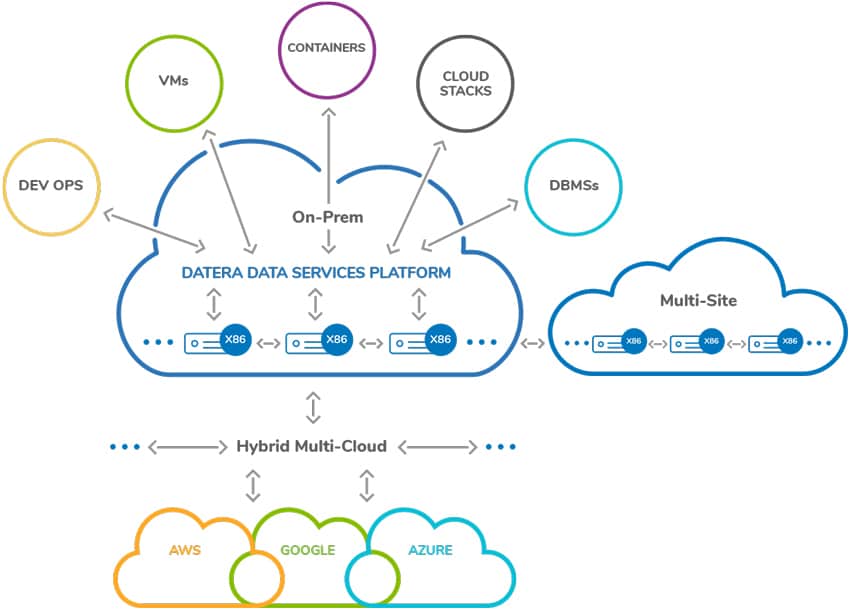
Datera Inc. recently announced the latest version of version of its platform, Datera 3.2 Platform. According to the company, the 3.2 version enables customers to automate data operations and capitalize on the transition to server-based architectures to solve their data challenges. The release also adds integration into container-based applications and expands its relationship with persistent memory technology leaders such as Intel and Samsung.
As organizations, both established and modern cloud-based businesses, move into heterogeneous and high-distributed environments, they can struggle to manage their data as it spans these new technological horizons. Datera’s 3.2 Platform aims to ease these struggles with data automation, self-driving orchestration, the ability to maximize consistent performance, and the ability to scale with operational control. The company states that all of this can be done while still allowing users to mix and match applications and infrastructure to hit their specific needs.
Capabilities include:
- Containers and Virtual Machines: 3.2 integrates deeply with container frameworks and the container ecosystem, including Docker, Rancher and Kubernetes. 3.2 includes automated data co-orchestration along with application containers scale that facilitates application development, testing and scale ups, complementing its existing support for virtual machine environments.
- Automated Operations: 3.2 introduces active-active stretch clusters to enable a truly distributed infrastructure that incorporates Datera’s patented approach to intelligent data orchestration and request routing to maximize consistent performance and continuous availability, allowing for effortless expansion and automatically rebalance as data grows.
- Maximum Performance: 3.2 delivers new high-performance data nodes through collaboration with and Intel and Samsung for support of NVMe and persistent memory technologies capable of 200K IOPS (input output operations per second) at 200 microseconds latency per node that can be combined in an overall environment to support millions of IOPS at consistent latency.
- @ Global Scale: 3.2 provides expanded support for high capacity environments, now to 6 petabytes across global rollouts, and new high capacity nodes, now to 96TB, all designed to support enterprise-scale deployments.
- Enhanced Data Services: 3.2 provides new efficiency capabilities like compression, virtual provisioning and deduplication, and the new S3 data service for high-performance object support to facilitate modern cloud native and artificial intelligence applications that underpin today’s generation of apps that harness rich content right from the start.
- Freedom with Control: 3.2 delivers on the promise of enabling CIOs to deliver data infrastructure as-a-service with an expanded roster of server-based storage options in partnership with the industry’s leading providers HPE, Dell and Cisco, all managed from a single pane of glass with predictive operations, advanced anomaly detection, and complete visual insight across both applications and data environment.
Availability
The Datera 3.2 Platform is available now.
Sign up for the StorageReview newsletter

